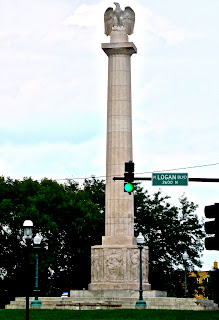 Seemingly overnight Chicago has transformed from a major city with one lone microbrewery into a beer-lover’s paradise. As American tastes have leaned towards more craft brewing, Chicago has not let go an opportunity to put itself on the map. While we don't yet have microbreweries to the extent of, say, Portland, the growth of the Windy City’s brewing industry has happened in the blink of an eye.
Seemingly overnight Chicago has transformed from a major city with one lone microbrewery into a beer-lover’s paradise. As American tastes have leaned towards more craft brewing, Chicago has not let go an opportunity to put itself on the map. While we don't yet have microbreweries to the extent of, say, Portland, the growth of the Windy City’s brewing industry has happened in the blink of an eye.
What’s interesting is that this isn’t the first time Chicago has been a beer-brewing juggernaut. One hundred years ago, the City of Big Shoulders was as crucial a beer-making metropolis as any. Even though Prohibition killed this industry in Chicago for a long time (as it did for a lot of other cities), the Siebel Institute in Lincoln Park has managed to remain an institution of higher brewing for generations.
This article will provide a synopsis of the breweries that are open or opening soon, how to get to them, and their respective tour details. So why is this important? Well it’s a great sign that, even in these difficult economic times, there is a major industry growing in Chicago creating jobs and wealth for the city. Secondly, it's another reason that Chicago is a destination. A few weeks ago, we waited in line for 90 minutes outside the Half Acre Brewery (article coming soon). Two people beat us there, beer tourists from Toledo. Getting tourists to spend money in Chicago helps our economy, and virtually any reason to get people to spend their money here is a good thing for the city. Lastly, it’s another cultural thing to do! If you love trying new beers, what better way to discover something than taking a brewery tour? Besides, the beer doesn’t get much fresher than drinking it where its made.
So if you have an interest in what exciting things Chicago breweries are doing, please read on! One more thing to note: this article covers breweries and not “brewpubs”. [A brewery sells and distributes their product whereas a brewpub serves house made beer, but you can only find it at that location (or maybe in a growler in your fridge)]. So you won’t find places like Revolution or Piece in this entry. Not saying there isn’t a place for brewpubs; they’re awesome too, but for the sake of conciseness we’re just sticking to the big boys for this one.

